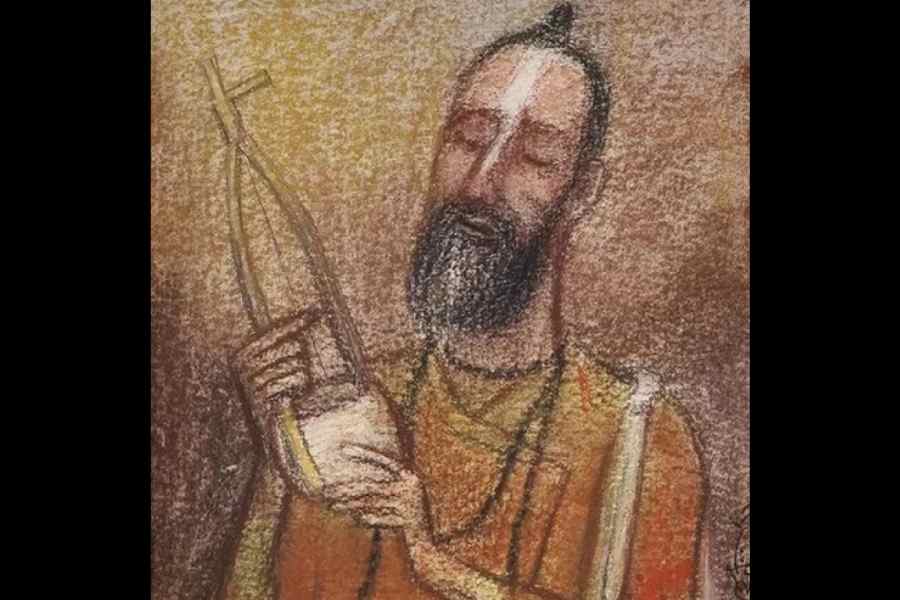As artists who come from social privilege and practise art forms that cater to that same section of society, we waltz through life just doing our thing. Of course, they put in a lot of hard work and make umpteen sacrifices, and many overcome economic challenges. But if talent is so obvious that it is difficult to ignore, more often than not, such hurdles are surmounted because of the inherent social network that race, caste, gender and colour provide and the fact that the art form is performed, patronised and appreciated largely by the social elite. Once the economic threshold is crossed, there is little to be done. Upskilling is not rocket science and merely adds layers of additional ability and information that help in keeping their art ‘interesting’.
Let us step back and wonder why we want to become artists. The initial drive comes from exposure, conditioning and, without doubt, from marvelling at the art and artists. This can result in young people taking the plunge into the uncertain world of art production. Family and friends are initially thrilled to show off a talented youngster. They beam with pride at social gatherings and amateur public events. But all this ceases once the individual wants to consider art as a career choice. The inner circle highlights the in-built dangers of such a decision, mainly focussing on art’s long gestation period, uncertainty, and ensuing financial instability. One cannot deny any of these realities. They will convince the individual to at least complete an undergraduate degree in another field. The logic being, if everything goes south, there is a degree to fall back on. Beyond the financial fear and despite their love for ‘their arts’, the social elite rarely view the arts as a serious professional endeavour. They would rather have a home-grown software engineer, doctor or accountant. They will admire artists from a distance and bathe in the cultural affirmation they provide, silently glad that someone else from a different home is doing the deed. They will come to events, be it a concert or a gallery show, as aficionados. On the other hand, organisers complain that these very people are often tight-fisted when it comes to supporting the arts. Many prefer free passes rather than paying for a ticket; a different sort of entitlement!
The art forms that occupy this space divorce themselves from critical thinking. This is because the privileged believe that their way of life is ‘ideal’. Their lifestyle, aesthetic choices, faith, rituals and social understandings are flaunted as flawless. Their social status, thus, makes their way of life aspirational. In such an environment, it is but natural that the arts they patronise and produce are also believed to be perfect. Consequently, everything is guarded by gatekeepers who regulate entry and exit and will not shy away from insensitively using the names of ‘others’ who fought their way in and withstood stigma and discrimination to offer proof of their own catholicity. Listening to those voices attentively and learning to understand the subtexts of what is said or left unsaid are never considered necessities. It is much like men boasting about their own progressive and feminist inclinations and feeling good about themselves.
Art is a profound reality check. In creating an art object, the artist invites all of us to experience life without being attached to our conditioned understandings. It frees us momentarily from the clutches of habit, ownership and identity in the hope that such a liberation will lead to reflection. But, when art is taught, created and shared from within a culture that rejects the premise of imperfection within, is it art? The arts that we partake in are indeed pleasurable and emotionally and structurally exquisite. But because of the way we control and hold them, they rarely push us towards self-enquiry. Despite this normative, there have been artists who robustly and with great élan challenged these art practices and the holding community. Noticing this obvious threat, the community either marginalised them as mavericks, outliers or deified them, placing them on a pedestal and making them unreachable to us. The implied message was: ‘They could ask the questions they did because of their perfection. Since you are not perfect, you need to abide by the rules that we have laid out.’ Another successful method of suppression is the sanitisation of their work, followed by the telling and retelling of stories that confirm the accepted self-idealisation.
We also hear of art as being a ‘unifier’ that brings diverse people together in harmony. All these platitudes are different ways of saying ‘our art is perfect’. Keep in mind that, in general, those who mouth such clichés possess social privilege. I have never heard artists from a marginalised location make these unilateral statements. On the contrary, they speak of art in terms of its potential to destabilise homogenous and oppressive structures. Expressing their lived experience is itself an act of defiance. Their art is also not self-conscious or protective of their own social fissures. This makes the privileged uncomfortable because it questions everything that they have established as ‘perfect’ and is one of the reasons they keep these art forms away from their sector. It is also why they keep a watch on who participates in their art. Unless the entrant buys into its ‘exemplary model’ and abides by conformed social mores, acceptance is difficult.
Art cannot be a unifier unless it clearly and unabashedly confronts the fractures that exist within the community that cradles it. This requires courage because it means we are willing to say aloud, through the art we make, troublesome truths about ourselves. Honesty cannot be a choice if we want to make ethical art. For the marginalised, expressing reality is not a choice, it is a necessity; hence being true is largely the norm. For us, it is a strategy. The truths we express through our art are selected after careful consideration. Only those that skim the surface or keep our deep-seated beliefs intact find artistic expression. Everything else is locked away or remains unrecognised.
Despite all these social manoeuvrings, art still surprises us. How much ever we might manipulate and twist it, when we are in the depths of creating an art object, the art somehow takes over. The mirror is shown to us and we stand naked, removed of all our falsities and protective gear. The receivers also find themselves experiencing a level of reflexivity that is disconcerting. In those moments, a minuscule shift is indeed possible. Unfortunately, the art creators realise that they have moved into a space that they cannot control and scuttle back to their convenient social hiding place. The receivers follow. What if we do not back off and allow ourselves to be drenched in that experience and are willing to let that overflow into our everyday lives?
T.M. Krishna is a leading Indian musician and a prominent public intellectual










